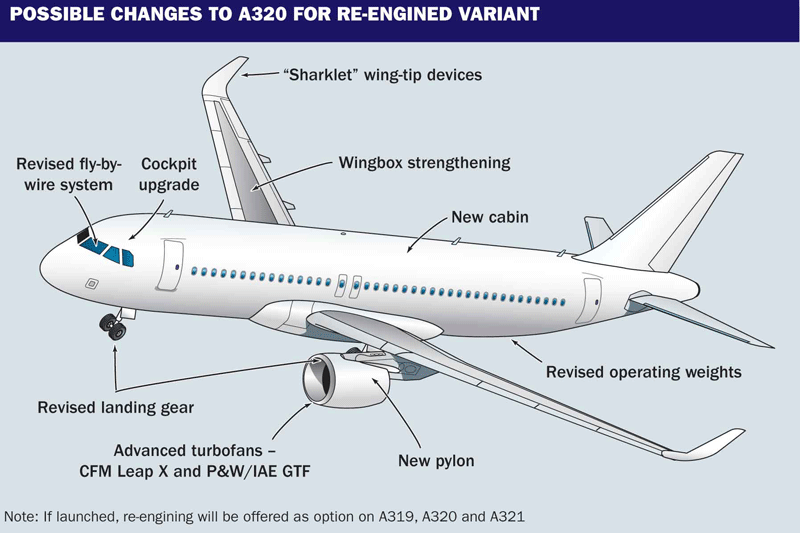Airbus and Boeing have given little away about how they would tackle the re-engining of their current single-aisles, beyond the obvious requirements to modify the pylon and wing - and in Boeing's case adjust the landing gear - to accommodate the larger engines with different weight characteristics.
From what Airbus has said about its plans so far, it appears to be aiming to follow the approach Boeing made two decades ago when it brought the first of the CFM International CFM56-powered 737-300s to market - its stated intention is to offer the new variants as an option alongside the current family members.
But beyond the necessary installation changes, what else might the manufacturers do to add longevity to airframes that might have to remain in production for at least a decade or more beyond their service entry five years from now?
Boeing Commercial Airplanes boss Jim Albaugh is wary of modifying the 737 too much if it goes ahead with its proposed re-engined variant. "You've got to watch out for the requirement creep. Our engineers would love to put every bell and whistle on this airplane that they know of, we have to resist that," he says.
Albaugh wants to avoid the temptation to develop the revised edition into the equivalent of a major change to the aircraft, and "we certainly don't want it to become a new airplane".
Airbus's chief salesman John Leahy is convinced that an all-new single-aisle is 15 years away, giving a re-engined A320 that arrives in 2015 a production life of at least a decade, perhaps more. If this is the case, this means potentially the upgraded family could be around for as long as the 737-300/400/500 was before it finally gave way to the 737NG, meaning that the European airframer may be keen to view the project as much more than an interim, or stop-gap development.
That being the case, then it is hard to envisage the engineers in Toulouse, Hamburg, Filton and Madrid not pushing for as much of Albaugh's dreaded "requirement creep" as possible. One could envisage that they would want to address areas such as the flightdeck, cabin and materials using the latest advances developed for the A380 and A350. If the airframer decides to maximise the performance gains that the re-engining could offer, it may also raise operating weights which may require structural and landing gear changes.
Beyond the basic information disclosed by Leahy that the upgrade would be offered on the A319, A320 and A321, and would incorporate engine related wing changes and the new "sharklet" winglets, Airbus declines to discuss the detail of what it is examining. But with Leahy also keen to have the programme "off chocks" by the Farnborough air show in July, we may not have to wait much longer to hear fuller details of Airbus's plans.
Airbus sales chief John Leahy talks about the re-engined A320
 |
|---|
Source: Flight International























